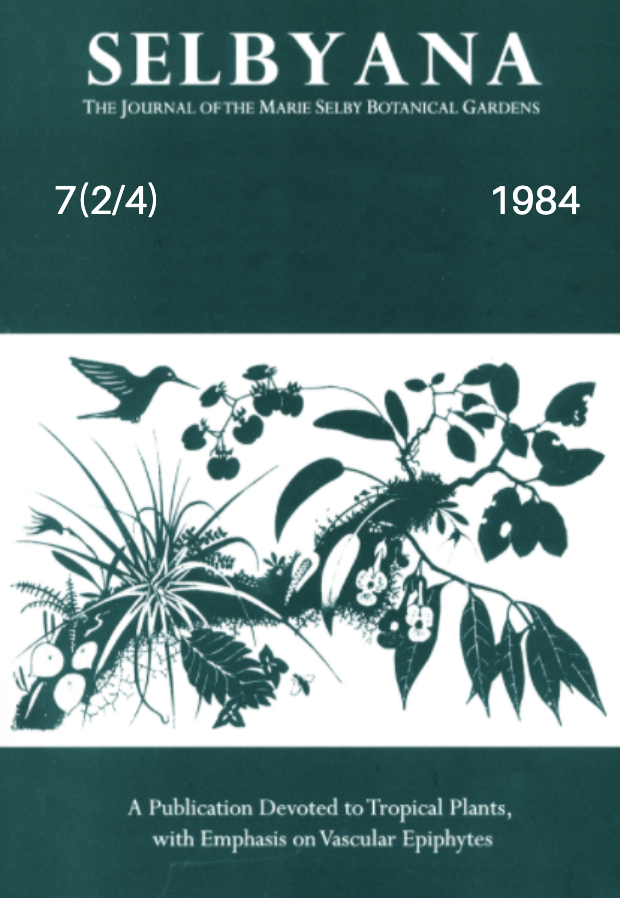Abstract
Tillandsia L. subgen. Tillandsia (Bromeliaceae) are primarily epiphytic monocots and are distributed over much of the New World tropics and subtropics. They have dispersed into a wide range of habitats and exhibit a tremendous diversity in characteristics of the plant body, inflorescence and flower. Many distinctions are apparently related to habitat selection, although several species of the same subgenus often occur sympatrically (Benzing, 1981). Closely related sympatric species often differ greatly in vegetative characters. Some differences may be related to niche adaptation. Other species more likely result from differences in genetic backgrounds which limit the way a given species can adapt to a particular environment.
Open Access and Copyright Notice
Selbyana is committed to real and immediate open access for academic work. All of Selbyana's articles and reviews are free to access immediately upon publication. There are no author charges (APCs) prior to publication, and no charges for readers to download articles and reviews for their own scholarly use. To facilitate this, Selbyana depends on the financial backing of the Marie Selby Botanical Gardens, the hard work and dedication of its editorial team and advisory board, and the continuing support of its network of peer reviewers and partner institutions.
Authors are free to choose which open license they would like to use for their work. Our default license is the Creative Commons Attribution-NonCommercial 4.0 (CC BY-NC 4.0). While Selbyana’s articles can be copied by anyone for noncommercial purposes if proper credit is given, all materials are published under an open-access license with authors retaining full and permanent ownership of their work. The author grants Selbyana a perpetual, non-exclusive right to publish the work and to include it in other aggregations and indexes to achieve broader impact and visibility.
Authors are responsible for and required to ascertain that they are in possession of image rights for any and all photographs, illustrations, and figures included in their work or to obtain publication or reproduction rights from the rights holders. Contents of the journal will be registered with the Directory of Open Access Journals and similar repositories. Authors are encouraged to store their work elsewhere, for instance in institutional repositories or personal websites, including commercial sites such as academia.edu, to increase circulation (see The Effects of Open Access).
